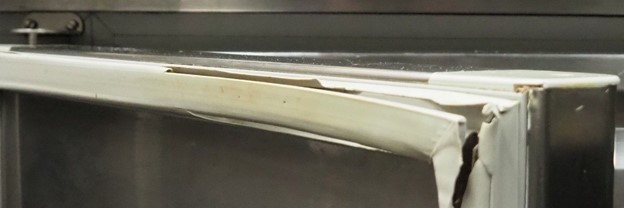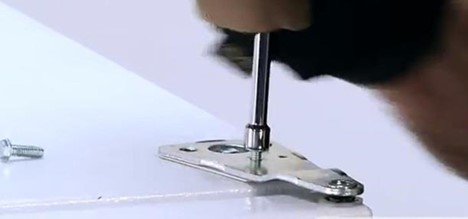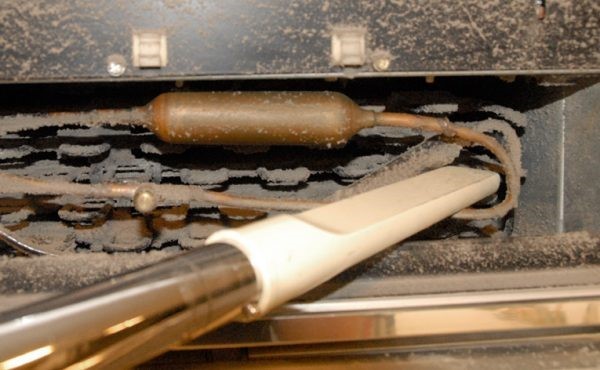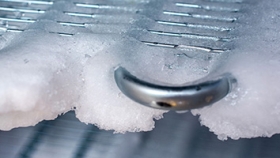If you notice ice and frost build up in your refrigerator compartment, you should immediately fix it. Frosting is not among natural processes in the refrigerator.
Perhaps you have seen some droplets on the refrigerator back wall. This is called condensation and is a natural phenomenon in the fridge and doesn't need to be repaired, but frost is a different story.
We have talked about refrigerator leaking and refrigerator too much cold in another articles. Here, we are going to explain about frosting which is another common problem in refrigerators.
Why is the refrigerator frosting up?
There are various possible causes for refrigerator frosting despite its regular defrost operation. We are going to talk about the most important factors.
Worn door gasket makes the refrigerator frost

One of the most common reasons for refrigerator frosting is faulty or worn door gasket. Warm air entering the fridge compartment causes frost to build up. In order to fix this problem, replace the gasket.
An overfilled refrigerator makes a lot of frost
Filling up the refrigerator with too much food limits the air flow inside the appliance and can cause frost to build up. In order to fix the problem, store foods in closed containers and let some space between them.
Note: don't fill your fridge at once if you return from grocery shopping, fill your refrigerator in stages in order to prevent frost build-up.
Loose door hinges can cause the refrigerator to frost

Loose door hinges let the outside warm humid air enter the refrigerator compartment and cause ice and frost to build up. Fixing this problem is so easy. Just take a screwdriver and tighten the hinges' screws so that there is no space for the air to penetrate.
Note: let the fridge slide backward 1cm in order for the door to close easily.
Tip: the hinges in some refrigerator models are covered by a plastic cap, remove the cap to access the screws.
Refrigerator too close to the back wall and frost formation
There should be at least 30 cm clearance space behind the refrigerator in order for the compressor heat to leave easily. Refrigerator being too close to the wall can cause some other problems rather than frost too, and lowers its lifespan. So, if you want to avoid any fridge repair, make some space between the refrigerator and the back wall of your kitchen.
Clogged refrigerator vents can cause frost to build up
Clogged air vents limit the air flow and can cause frost. In order to solve this problem and prevent frost, remove the vents twice a year and wash them with warm water using a brush.
Warning: unplug the refrigerator before starting any service or repair operation and accessing the inner parts.
Dirty condenser coils can cause the refrigerator to frost

Everything that limits the air flow inside or outside the fridge can cause frost to build up. Dirty condenser coils are one of these factors. So, use a vacuum cleaner with its brush head to clean the coils once in a while.
Note: move the vacuum cleaner along the coils direction for not denting them.
Tip: condenser coils are located at the bottom, at the back or even at the top part of the fridge. You can find them by checking the manual.
How to defrost the refrigerator?
New refrigerators are frost-free. You don't need any manual defrosting. But if you have an old one, follow the guidelines to fix your frost-building refrigerator.
- Unplug the refrigerator.
- Remove the food and also the refrigerator shelves.
- Place a container on the ground to collect the defrost water.
- Soak a clean towel in hot water and put it on the refrigerator frost or ice to make them melt faster. Press the towel gently on the frost to warm the lower layers too.
- When all the frost melts down, clean inside the refrigerator, dry it and place the shelves back inside the fridge.
- Before plugging in the refrigerator, check all the above factors to see whether the problem is solved.
- Plug in the refrigerator.
- Adjust the fridge thermostat. The normal temperature for the refrigerator is 3 to 4°C and for the freezer is -18°C. Adjusting the fridge on lower temperatures can cause frost.
Frost build-up is one of the refrigerator common problems and fixing the problem is not so complicated as we explained here. But if you like to have more information about refrigerator problems and its repair, don't miss refrigerator training course in HelloTechnic website. Our instructors will teach you everything about refrigerator installation, service, troubleshooting and repair through films and animations to make you a professional repairman.


